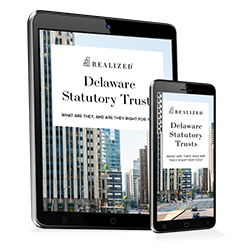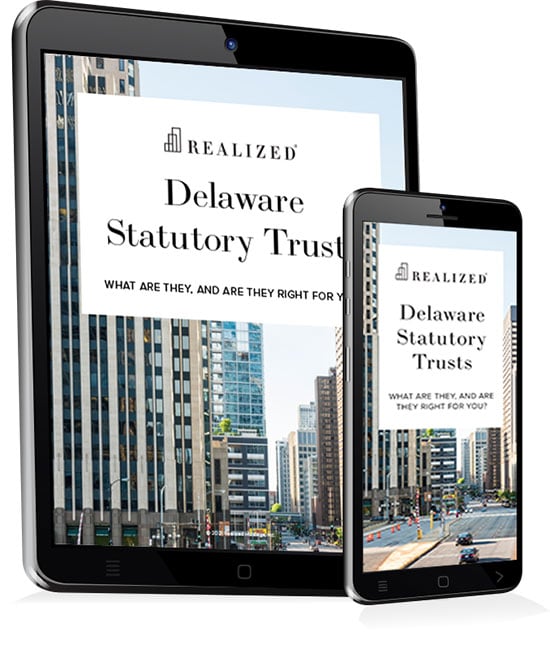
Financing may not seem necessary in a 1031 Exchange since you’re theoretically reinvesting all the proceeds of a property sale into a Delaware Statutory Trust (DST). However, various scenarios in real life can create the need for financing. This article provides an overview of these options to help you understand the more common DST financing approaches. Let’s dive in.
All-cash Investment
The most straightforward 1031 exchange financing is an all-cash investment. In this case, you use your personal cash to purchase shares of the DST if, for example, there are delays in the closing of your relinquished property. Not needing to wait for loan approval creates faster processing. However, an all-cash investment can be limiting, especially if you don’t have enough on hand to reach the DST minimum. The lower purchasing power may also prevent you from diversifying across multiple DSTs.
DST Bridge Loans
One popular financing option is bridge loans for 1031 Exchanges. A bridge loan is a short-term loan utilized to cover funding gaps until a more permanent source is secured, hence the term “bridge.” This strategy is commonly used when DST or 1031 Exchange deadlines are approaching, but you’re experiencing delays in the closing stage that stop you from transferring the relinquished property’s proceeds into the DST offering.
Pros
- Bridge loans provide quick access to DSTs.
- With the liquidity, you can enter a DST even if the funds are still in escrow.
- Provides additional funds that help you enter larger DSTs.
Cons
- Bridge loans can have high interest rates because of their short-term contracts.
- Given the short repayment terms, you’ll need a clear exit strategy to avoid financial strain.
- Bridge loans may have additional hidden fees, such as origination fees and creditworthiness evaluations.
Traditional Financing
One other option is traditional financing, wherein you take out a loan from a lender or a bank. Compared to bridge loans, traditional financing has more manageable interest rates and longer repayment terms. The issue with this option is that a lot of DSTs do not permit traditional financing. Plus, Investors using a 1031 Exchange must replace an equal or greater amount of debt, adding complexity to the transaction.
Alternative Financing Options
If the three popular strategies we outlined above are not suitable for your specific case, there are a few other approaches you can leverage, including:
- Private Loans: You can use your home equity or other private funding sources to secure the capital for the DST.
- Seller Financing: There are DST sponsors that offer short-term financing for investors who want to enter the trust.
- Partnerships and Joint Ventures: Pooling resources with other investors may allow you to enter into larger, more desirable DST offerings.
Wrapping Up: Delaware Statutory Trust Financing
Whether you want to increase your purchasing power or are facing timing issues with the 1031 Exchange, leveraging financing is a useful strategy to help you enter a DST. Bridge loans, seller financing, and many other options are available depending on your needs. Contact Realized 1031 for more details.
The tax and estate planning information offered by the advisor is general in nature. It is provided for informational purposes only and should not be construed as legal or tax advice. Always consult an attorney or tax professional regarding your specific legal or tax situation.
Cited Sources:
https://www.investopedia.com/terms/b/bridgeloan.asp
https://www.quickenloans.com/learn/bridge-loan
https://www.americanbar.org/groups/real_property_trust_estate/resources/real-estate/1031-exchange/



